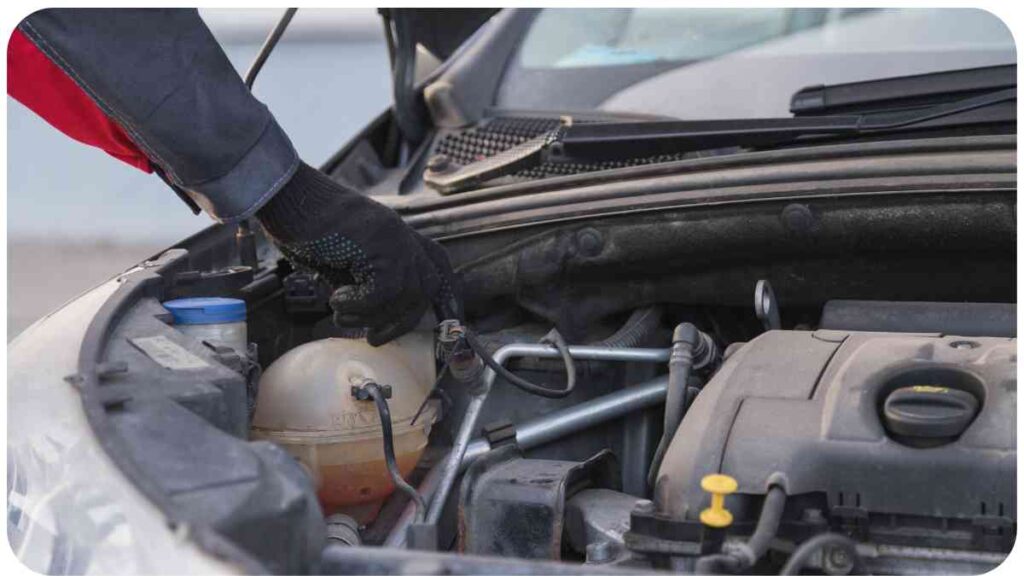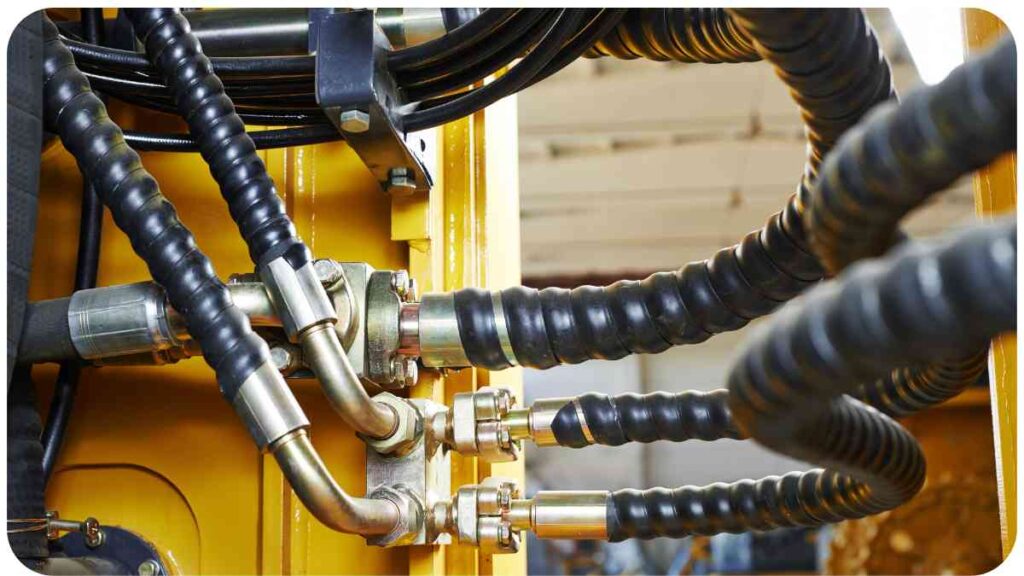Off-road vehicles are built to handle tough terrains and challenging conditions. However, these rugged machines can sometimes face issues that lead to overheating. In this article, we will explore some common causes of overheating in off-road vehicles and provide troubleshooting tips to help you identify and resolve these issues.
| Takeaways |
|---|
| Regular maintenance and preventive measures are key to preventing overheating in vehicles. |
| Coolant leaks should be promptly identified and repaired to maintain proper coolant levels. |
| Faulty thermostats can disrupt the engine’s cooling system and lead to overheating. |
| A malfunctioning radiator can hinder proper heat dissipation and contribute to overheating. |
| Insufficient airflow through the cooling system can result from clogged or damaged components. |
| Promptly address any issues with cooling fans, as they play a vital role in heat dissipation. |
| Regularly check the condition of the serpentine belt to ensure proper functioning of cooling components. |
| Professional inspections of the cooling system can help catch and resolve problems early on. |
| Monitor the engine oil level and quality, as insufficient or degraded oil can cause overheating. |
| Taking environmental and usage conditions into account is crucial for maintaining optimal cooling system performance. |
2. Common Causes of Overheating

2.1 Cooling System Failure
One of the primary causes of overheating is a failure within the vehicle’s cooling system. The cooling system is responsible for regulating temperatures and keeping the engine from overheating. If there is a leakage in the system, a faulty water pump, or a malfunctioning radiator, the cooling system may fail to perform its job effectively.
Table 2.1: Cooling System Components
| Component | Function |
| Radiator | Cools the coolant fluid |
| Water Pump | Circulates coolant through the system |
| Thermostat | Regulates coolant flow to the radiator |
| Heater Core | Transfers heat to the cabin when needed |
| Hoses | Allow coolant to flow between components |
| Expansion Tank | Holds excess coolant |
| Fan | Enhances airflow through the radiator |
| Belt | Drives the water pump and fan |
| Coolant | Absorbs heat from the engine |
2.2 Low Coolant Level
Insufficient coolant levels can also lead to overheating. Coolant, also known as antifreeze, plays a crucial role in absorbing heat from the engine. When the coolant level is low, there is not enough fluid to transfer heat effectively, causing the engine to overheat.
Building a support system after experiencing grief and loss can be difficult, but finding strength in the community can make a big difference. Check out our guide on navigating dangerous terrain: safety tips for off-road drivers to learn how to overcome challenges and ensure your off-road adventures are safe.
Table 2.2: Coolant Types and Recommendations
| Coolant Type | Recommendation |
| Ethylene Glycol | Suitable for most vehicles, needs regular replacement |
| Propylene Glycol | Environmentally friendly, longer service life |
| Hybrid | Combination of ethylene and propylene glycol, extended longevity |
2.3 Faulty Thermostat
The thermostat controls the flow of coolant from the engine to the radiator based on the engine’s temperature. If the thermostat gets stuck in the closed position, it hinders the coolant flow, leading to engine overheating. Similarly, if it remains stuck in the open position, the engine may not reach optimal operating temperature, causing decreased fuel efficiency and performance.
Table 2.3: Thermostat Troubleshooting Tips
| Observation | Possible Issue |
| Engine heats up too quickly | Thermostat stuck closed |
| Engine takes too long to warm up | Thermostat stuck open |
| Fluctuating temperature gauge | Thermostat opening and closing erratically |
2.4 Radiator Problems
Radiators are essential for cooling the coolant that passes through them. If the radiator is clogged with debris, the coolant won’t be able to dissipate heat efficiently. This can lead to overheating, especially under demanding off-road conditions where the engine is working hard.
Proper maintenance is crucial to prevent overheating in off-road vehicles. Our comprehensive guide on DIY oil change for off-road vehicles provides step-by-step instructions to keep your vehicle in optimal condition and avert potential issues.
Table 2.4: Radiator Troubleshooting Tips
| Observation | Possible Issue |
| Leaking coolant | Damaged radiator or hoses |
| Damaged fins | Reduced cooling efficiency |
| Debris accumulation | Restricted airflow |
| Physical damage | Leaks, cracks, or bent fins |
2.5 Insufficient Airflow
Inadequate airflow through the radiator can lead to overheating. Off-road vehicles often face dusty and muddy conditions, and if the radiator’s fins
are clogged with dirt or mud, it restricts the airflow, reducing the cooling capacity. Additionally, faulty cooling fans that fail to kick in at the right time can hinder the airflow, allowing heat to build up.
Table 2.5: Airflow and Cooling Fan Troubleshooting
| Observation | Possible Issue |
| Coolant temperature rises quickly | Insufficient airflow through the radiator |
| Overheating in slow-moving or idle situations | Inoperative or ineffective cooling fan |
| Coolant temperature returns to normal at higher speeds | Natural increased airflow cools the radiator |
3. Troubleshooting Techniques
Now that we have identified the common causes of overheating in off-road vehicles, let’s delve into some troubleshooting techniques to help you diagnose and resolve these issues.
Regular maintenance is the key to keeping your off-road vehicle running smoothly. Explore our article on the importance of regular maintenance for off-road vehicles to understand the significance of scheduled check-ups and how they can prevent overheating problems.
3.1 Check the Cooling System
Start by inspecting the cooling system for any signs of leaks. Leaks can occur in various components like the radiator, hoses, water pump, or even the engine itself. Look for coolant puddles under the vehicle or any visible signs of coolant leakage. If you notice any leaks, it’s crucial to identify and fix them promptly to prevent further complications.
3.2 Inspect the Coolant Level
Check the coolant reservoir or radiator to ensure that the coolant level is within the recommended range. If it’s low, top it up with the appropriate coolant mixture as specified by the manufacturer. Remember to check the coolant level when the engine is cool to avoid any potential burns.
3.3 Test the Thermostat
To verify the functionality of the thermostat, you can perform a simple test. Start the engine and allow it to reach operating temperature. Monitor the temperature gauge and check if it rises steadily within the normal range. If it stays too low or fluctuates erratically, the thermostat might be faulty and require replacement.
3.4 Evaluate the Radiator
Examine the radiator for any visible damage or blockages. If you notice bent fins, debris accumulation, or leaks, it’s essential to address these issues. Clean the radiator and gently straighten any bent fins to restore proper airflow. In the case of leaks or severe damage, consult a professional for repair or replacement.
3.5 Review Airflow and Cooling Fans
Inspect the cooling fans to ensure they are functioning correctly. With the engine running, the fans should kick in when the temperature rises above normal. If they don’t activate, there might be an issue with the fan motor, relay, or temperature sensor. Consult a mechanic to diagnose and resolve the problem.
Table 3.5: Troubleshooting Cooling Fans
| Observation | Possible Issue |
| Fans not turning on | Faulty fan motor, relay, or temperature sensor |
| Fans running continuously | Faulty fan control module |
| Intermittent fan operation | Loose connections or wiring issues |
4. Additional Factors to Consider
Aside from the primary causes of overheating, several other factors can contribute to the problem. It’s crucial to examine these aspects during troubleshooting to ensure that all potential issues are addressed.
4.1 Engine Oil Level and Quality
Check the engine oil level and quality regularly. Insufficient oil or degraded oil can cause the engine to overheat. If needed, top up the oil to the recommended level and consider an oil change if it appears dirty or past its service life.
Proper tire pressure is essential for optimal off-road performance and preventing overheating. Our comprehensive guide on understanding your ATV’s tire pressure provides valuable information on tire maintenance and its impact on the overall performance of your ATV.
4.2 Serpentine Belt Condition
The serpentine belt drives various components, including the water pump and cooling fan. If the belt is worn, cracked, or loose, it can affect the proper functioning of these components. Inspect the belt for signs of damage and replace it if necessary.
4.3 Water Pump Functionality

The water pump is responsible for circulating coolant throughout the cooling system. A malfunctioning water pump can disrupt the coolant flow, leading to overheating. Look for signs of leakage around the pump or any unusual noises. If you suspect a faulty water pump, consult a mechanic for further inspection and potential replacement.
4.4 Electric Components
Check all electric components related to the cooling system, including relays, sensors, and wiring. Faulty electrical connections can result in intermittent cooling fan operation or inaccurate temperature readings. Ensure all connections are secure and replace any damaged components if needed.
4.5 Environment and Usage Conditions
Take into account the environment and conditions in which your off-road vehicle operates. Extreme heat, heavy loads, and sustained high-speed driving can put additional strain on the cooling system. Adjust your maintenance and preventive measures accordingly to ensure optimal performance.
Selecting the right off-road tires is crucial for preventing overheating during your adventures. Dive into our comprehensive guide on choosing the right off-road tire to ensure you have the appropriate tires for your vehicle and terrains you’ll be tackling.
5. Preventive Maintenance
To minimize the risk of overheating and extend the lifespan of your off-road vehicle’s cooling system, it’s essential to follow a regular preventive maintenance routine. Here are some preventive measures you can take:
5.1 Regular Fluid Checks and Changes
Regularly check all fluids, including coolant and engine oil, and ensure they are at the appropriate levels. Follow the manufacturer’s recommended intervals for fluid changes and replace them as needed. Maintaining clean and fresh fluids helps in efficient cooling and lubrication of the engine.
5.2 Radiator Flushing
Perform periodic radiator flushes to remove any built-up sediment or debris that can hinder cooling efficiency. Flushing the radiator helps clear out blockages, ensuring optimal heat dissipation and preventing overheating.
5.3 Fan and Belt Inspection
Inspect the cooling fan and serpentine belt regularly to ensure they are in good condition. Check for signs of wear, cracking, or loose tension. Replace any worn-out belts and address any fan issues promptly to maintain proper airflow and prevent overheating.
5.4 Air Filter Replacement
A clean air filter is crucial for the engine’s efficiency and cooling system performance. Regularly replace the air filter according to the manufacturer’s recommendation to ensure adequate airflow to the engine and prevent debris from clogging the radiator.
5.5 Professional Inspection
Consider scheduling periodic professional inspections of your off-road vehicle’s cooling system. A qualified mechanic can thoroughly assess the system, identify any potential issues, and provide timely maintenance or repairs. Professional inspections help catch problems early on and prevent major breakdowns or damage.
6. Conclusion
Off-road vehicles are prone to overheating due to the demanding conditions they face. By understanding the common causes of overheating and following the troubleshooting tips provided in this article, you can diagnose and resolve issues effectively. Remember to perform regular preventive maintenance to keep your vehicle’s cooling system in optimal condition.
Maintaining a cool and efficient engine is crucial for off-road adventures, ensuring reliable performance and preventing costly repairs. With the right knowledge and proactive approach, you can enjoy your off-road escapades without worrying about overheating. Keep your vehicle’s cooling system in top shape, and let the adventures roll on!
Further Reading
Here are some additional resources to learn more about troubleshooting and preventing overheating in off-road vehicles:
- Tips to Avoid Overheating Your 4×4: This article provides practical tips and advice on preventing overheating issues in your 4×4 vehicle, including advice on cooling system maintenance, radiator protection, and choosing the right coolant.
- Common Causes of Overheating and What to Do About It: Explore the common causes of overheating in vehicles and learn about potential solutions. This resource covers issues such as coolant leaks, faulty thermostats, radiator problems, and more.
- What to Do When Your Car Overheats: This comprehensive guide explains the causes of overheating and provides tips on what to do if your car overheats. It covers steps to take during an overheating event, as well as preventive measures to protect your vehicle from overheating.
FAQs
Here are some frequently asked questions about overheating in off-road vehicles:
Why is my off-road vehicle overheating?
There are several potential reasons for your off-road vehicle to overheat, including cooling system failure, low coolant level, a faulty thermostat, radiator problems, or insufficient airflow.
How can I prevent my off-road vehicle from overheating?
Regular maintenance and preventive measures can help prevent overheating. This includes checking fluid levels, inspecting the cooling system, ensuring proper coolant levels, maintaining clean air filters, and addressing any issues promptly.
Can driving in extreme heat cause overheating?
Yes, driving in extreme heat can put additional strain on the cooling system and increase the risk of overheating. It’s important to monitor coolant levels and maintain the cooling system properly when operating in hot conditions.
What should I do if my off-road vehicle starts to overheat?
If your vehicle starts to overheat, safely pull over to the side of the road and turn off the engine. Allow the engine to cool down before attempting to investigate or address the issue. Check coolant levels, inspect for leaks, and consult a professional if necessary.
When should I seek professional assistance for overheating issues?
If you’ve tried basic troubleshooting steps and the overheating problem persists, or if you’re unsure about how to diagnose or resolve the issue, it’s advisable to consult a professional mechanic who can accurately identify and address the problem.

Hi there! I’m Hellen James, and I’m the author of Unified Off-roads. I’ve been driving off-road for more than ten years, and I’ve had a lot of fun in that time—and a few not-so-great experiences too. But I’ve always wanted to help other people get started off-roading, so I decided to start this blog to share my knowledge with others.


